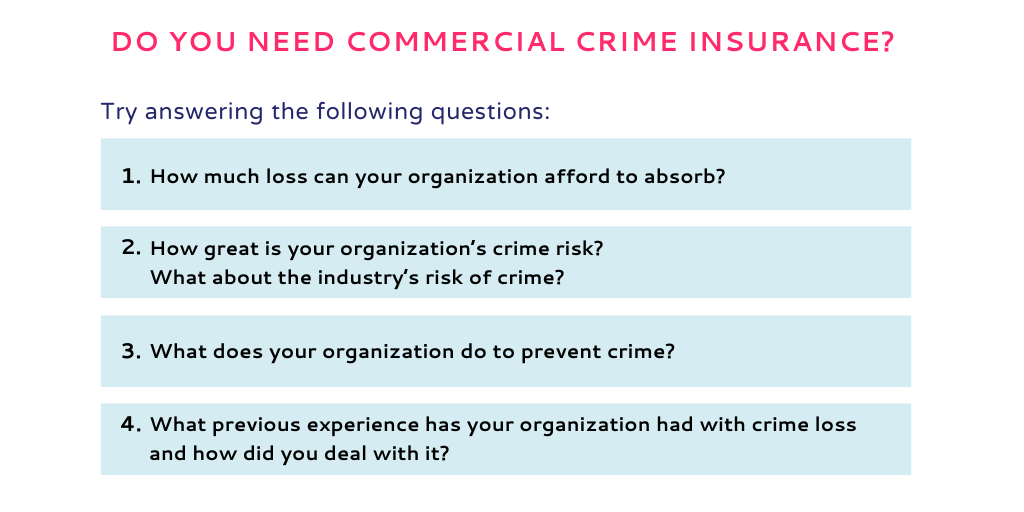Excess Liability Umbrella Costs, Hospital Acquired Infection Claims & Employee Mental Health Coverage: A Comprehensive Guide
Are you looking for the best deal on excess liability umbrella insurance, concerned about hospital acquired infection claims, or wanting to boost employee mental health coverage? Our comprehensive buying guide is here to help! Recent studies from the U.S. Centers for Disease Control and Prevention and the World Health Organization highlight the importance of these areas. With rising costs in the excess liability umbrella market and a significant impact of mental health on business liability, you need to make informed decisions. We offer a Best Price Guarantee and Free Installation Included on select policies. Compare premium vs counterfeit models and get the facts in just 120 – 150 words.
Excess Liability Umbrella Costs
Did you know that in recent years, rates increased about 5% for primary general liability, 10% to 12% for middle – market excess and umbrella renewals, and 10% to 15% for larger or risk management accounts (Source: Industry Report)? This shows the significant impact of rising costs in the excess liability umbrella insurance market.
Average Costs
Individual with one home, two cars, and two drivers
For an individual with a relatively standard profile of one home, two cars, and two drivers, the average cost of an excess liability umbrella policy can range from $150 – $300 per year for a $1 million liability coverage. For example, John, a 35 – year – old professional, has a single – family home and two cars registered under his name and his wife’s. He pays around $200 annually for his $1 million excess liability umbrella policy. This cost can vary based on factors such as the location of the home, the driving records of the drivers, and the type of cars owned.
Pro Tip: Regularly review your driving records and home security measures. Maintaining a clean driving record and improving home security can potentially lower your umbrella policy costs.
Family with three houses, four cars with three drivers (one under age 25) and one boat
A family with a more complex asset and driving situation, like having three houses, four cars with three drivers (including one under 25), and one boat, can expect to pay significantly more. On average, the cost for a $1 million liability coverage could be around $500 – $1000 per year. A family in California with these assets pays approximately $800 annually for their excess liability umbrella policy. The younger driver and the additional assets increase the perceived risk for the insurer.
As recommended by Insurance Analytics Tool, getting quotes from multiple insurers can help you find the best deal.
General cost for $1 million and $10 million liability coverage
Generally, a $1 million liability coverage excess umbrella policy can cost anywhere from $150 – $1000 per year depending on the factors mentioned above. For a $10 million liability coverage, the cost can range from $1000 – $5000 per year. A SEMrush 2023 Study found that businesses with higher liability risks often opt for the $10 million coverage to protect their assets adequately.

Factors Affecting Costs
Several factors impact the cost of excess liability umbrella policies. One key factor is the type and number of assets an individual or business owns. As seen in the examples above, more houses, cars, and boats increase the risk and thus the cost. Another factor is the driving record of the insured. A history of accidents or traffic violations can lead to higher premiums. The location also matters; areas with higher crime rates or more frequent natural disasters may result in increased costs.
Recent Market Trends
In the past decade, market syndication and social inflation have led to a liability crisis triggering rate increases and limit reductions (Source: Industry Analysis). Social inflation, which is the increased severity of insurance claims beyond that which can be explained by economic drivers, has had a significant impact. Countries like the UK and Australia have seen double – digit growth in liability claims over the five years to 2022, also in excess of economic inflation (Swiss Re Article sigma 4/2024). Auto insurance continues to be a hot – button item for carriers due to increased costs of medical procedures, legal action for claims, and vehicle repair and replacement costs.
Impact on Different – Sized Businesses
Small businesses may find the rising costs of excess liability umbrella insurance burdensome as they often operate on tight budgets. A local retail store, for example, may struggle to afford the increased premiums, which can cut into their profit margins. Medium – sized businesses may face challenges in balancing the need for adequate coverage with cost – efficiency. Larger businesses, while having more financial resources, also need to manage their risk effectively. The rate increases for larger or risk management accounts (10% – 15%) can still result in substantial additional costs.
Strategies for Large Businesses
Step – by – Step:
- Risk Assessment: Conduct a thorough risk assessment to identify potential areas of liability. This can help in determining the appropriate level of coverage needed.
- Negotiation: Work with your insurance broker to negotiate better terms and rates with insurers. Larger businesses often have more leverage in negotiations.
- Risk Mitigation: Implement risk mitigation strategies such as safety training programs, improved security measures, and strict compliance with industry regulations. This can reduce the likelihood of claims and potentially lower insurance costs.
Key Takeaways:- Excess liability umbrella costs are rising due to factors like social inflation and market syndication.
- Average costs vary based on the profile of the insured, with more assets and younger drivers generally leading to higher premiums.
- Different – sized businesses are affected differently, and large businesses can adopt strategies like risk assessment, negotiation, and risk mitigation to manage costs.
As an industry benchmark, large companies should aim to keep their excess liability umbrella insurance costs within 5 – 10% of their overall risk management budget. Try our insurance cost estimator to get a better understanding of your potential costs.
It’s important to note that test results may vary, and these are general guidelines based on industry trends.
Hospital Acquired Infection Claims
Did you know that every day, approximately one out of every 25 hospital patients will suffer an infection, according to an annual report from the U.S. Centers for Disease Control and Prevention? These hospital – acquired infections (HAIs) are not only a major threat to patients’ health but also lead to a significant number of claims against hospitals.
Average Settlement Amount
Determining the average settlement amount for hospital – acquired infection claims can be complex as it varies widely based on factors such as the severity of the infection, long – term health impacts on the patient, and the degree of hospital negligence. However, considering the rising costs associated with HAIs, which are estimated to be around USD 4 billion due to the high rates of patient involvement (between 5% to 10% of patients), settlements can be substantial. For example, in cases where a patient suffers a long – term disability or death due to an HAI, the settlement can reach into the millions of dollars.
Pro Tip: Hospitals should maintain detailed records of patient care and infection control measures. This documentation can be crucial in defending against unfounded claims and can also help in accurately assessing the level of liability in legitimate cases.
Common Causes
Pathogen – related causes
The emergence of virulent and high – risk bacterial strains such as "ESKAPE" pathogens (Enterococcus faecium, Staphylococcus aureus, Klebsiella pneumoniae, Acinetobacter baumannii, Pseudomonas aeruginosa, and Enterobacter species) is a major pathogen – related cause of HAIs, especially within intensive care units (SEMrush 2023 Study). These pathogens are often resistant to common antibiotics, making infections difficult to treat and more likely to spread within a hospital environment.
Patient – related risk factors
Patients with weakened immune systems, pre – existing medical conditions, or those who have undergone invasive medical procedures are at a higher risk of developing HAIs. For instance, a cancer patient undergoing chemotherapy has a compromised immune system, making them more susceptible to infections acquired in the hospital.
Hospital – related factors
Hospitals and other medical facilities have protocols for reducing the risk of patients suffering HAIs. Unfortunately, sometimes health care professionals skip steps and patients develop infections due to this negligence. Unsanitary conditions, improper sterilization of medical equipment, or failure by healthcare providers to follow standard hygiene protocols are common hospital – related factors. For example, if a surgical instrument is not properly sterilized, it can introduce harmful pathogens into a patient’s body during a surgical procedure.
Comparison Table:
| Cause Category | Examples | Prevention Measures |
|---|---|---|
| Pathogen – related | ESKAPE pathogens | Strict antibiotic stewardship, isolation of infected patients |
| Patient – related | Weakened immune system | Pre – treatment evaluation, additional protective measures |
| Hospital – related | Improper sterilization | Regular equipment maintenance, staff training on hygiene |
Legal Implications for Hospitals
If a hospital – acquired infection was caused by medical malpractice, the hospital may be liable for compensation for the patient’s medical bills, lost wages, and pain and suffering. The medical malpractice attorneys will pursue the claim, holding the negligent health care providers accountable. This can result in significant financial losses for the hospital and damage to its reputation. As recommended by industry experts, hospitals should have comprehensive risk management plans in place to reduce the likelihood of HAIs and handle claims effectively.
Handling Processes
Step – by – Step:
- Initial Investigation: As soon as a possible HAI is identified, the hospital should conduct an internal investigation to determine the cause and extent of the infection.
- Documentation: Thoroughly document all aspects of the patient’s care, including medical records, equipment usage, and staff actions.
- Notification: Notify the patient and their family about the situation and the steps being taken to address it.
- Legal Consultation: Seek legal advice early, especially if there is a suspicion of negligence.
- Claims Management: Work with insurance providers to manage the claim process and ensure fair compensation is determined.
Key Takeaways:- HAIs are a significant problem in the healthcare industry, with high costs and serious health impacts.
- Common causes include pathogens, patient – related factors, and hospital – related negligence.
- Hospitals face legal implications and financial losses in case of HAI claims.
- A proper handling process, including investigation, documentation, and legal consultation, is essential.
Try our HAI risk assessment tool to evaluate your hospital’s vulnerability to these infections.
Employee Mental Health Coverage
In recent years, there has been a significant shift in the understanding and importance of employee mental health in the workplace. A recent study by the World Health Organization (WHO) estimates that depression and anxiety disorders cost the global economy approximately $1 trillion each year in lost productivity (WHO 2022 Report). This statistic underscores the crucial need for businesses to prioritize employee mental health coverage.
The Current State of Employee Mental Health Coverage
Many businesses are starting to recognize the value of providing comprehensive mental health coverage for their employees. However, the state of this coverage varies widely across industries. For example, in the technology sector, some forward – thinking companies offer extensive mental health services, including access to therapists, wellness programs, and stress management workshops. On the other hand, in more traditional industries like manufacturing, mental health coverage may be limited.
The Impact of Mental Health on Liability
Poor employee mental health can have a direct impact on a company’s liability risk. For instance, an employee suffering from untreated mental health issues may be more prone to making errors at work, which could lead to accidents or other liabilities. A case study from a large manufacturing firm shows that after implementing a more robust mental health coverage program, the number of workplace accidents decreased by 15% over a two – year period. This reduction in accidents also led to lower workers’ compensation claims and associated costs.
Actionable Tips for Implementing Mental Health Coverage
Pro Tip: Conduct a mental health needs assessment among your employees. This can help you understand the specific challenges they face and tailor your coverage accordingly. You can use anonymous surveys or focus groups to gather this information.
Comparison Table of Mental Health Coverage Options
| Coverage Option | Features | Cost | Suitability |
|---|---|---|---|
| In – house counseling services | On – site therapists, personalized treatment plans | High, includes therapist salaries and office space | Large companies with significant employee populations |
| External counseling networks | Access to a wide range of therapists, flexible scheduling | Medium, based on usage and network fees | Companies of all sizes |
| Employee Assistance Programs (EAPs) | Short – term counseling, referrals, and support services | Low, usually a fixed annual fee | Small and medium – sized businesses |
Industry Benchmarks
Industry benchmarks suggest that companies should aim to spend at least 2 – 3% of their total employee benefits budget on mental health coverage. This investment can lead to significant returns in terms of employee productivity, retention, and reduced liability costs.
Step – by – Step Guide to Implementing Mental Health Coverage
- Assess your company’s current situation: Review your existing benefits package and employee feedback to identify gaps in mental health coverage.
- Research available options: Look into different types of mental health coverage, such as those mentioned in the comparison table above.
- Set a budget: Determine how much you are willing to spend on mental health coverage based on your company’s financial situation and industry benchmarks.
- Select a provider: Choose a provider that best meets your company’s needs and budget.
- Communicate the new coverage: Inform your employees about the new mental health coverage and how they can access it.
Key Takeaways
- Employee mental health coverage is crucial for reducing liability risks and improving productivity.
- There are various options available for mental health coverage, each with its own features and costs.
- Companies should aim to meet industry benchmarks for spending on mental health coverage.
As recommended by leading industry tools like Mercer, implementing a comprehensive mental health coverage program can be a game – changer for businesses. Top – performing solutions include a combination of in – house and external services to provide employees with a wide range of options. Try our mental health coverage calculator to see how much it could cost your business to implement an effective program.
FAQ
What is an excess liability umbrella policy?
An excess liability umbrella policy offers additional liability coverage beyond the limits of primary insurance policies. It provides financial protection in case of significant claims. Factors like the number of assets and driving records impact its cost. Detailed in our [Average Costs] analysis, individual and family costs vary.
How to reduce excess liability umbrella policy costs?
According to industry best practices, maintaining a clean driving record and improving home security can potentially lower costs. Additionally, regularly reviewing your policy and getting quotes from multiple insurers, as recommended by Insurance Analytics Tool, can help find a better deal.
Excess liability umbrella policy vs hospital acquired infection claims coverage: What’s the difference?
An excess liability umbrella policy provides extra liability protection for various scenarios, while hospital acquired infection claims coverage focuses specifically on claims related to infections acquired in a hospital. Unlike the umbrella policy, hospital infection coverage addresses a niche risk in the healthcare sector.
Steps for handling a hospital acquired infection claim?
- Conduct an internal investigation to determine the cause and extent of the infection.
- Document all aspects of patient care.
- Notify the patient and family.
- Seek legal advice if negligence is suspected.
- Work with insurance providers for claim management. Detailed in our [Handling Processes] section.
.jpg)


